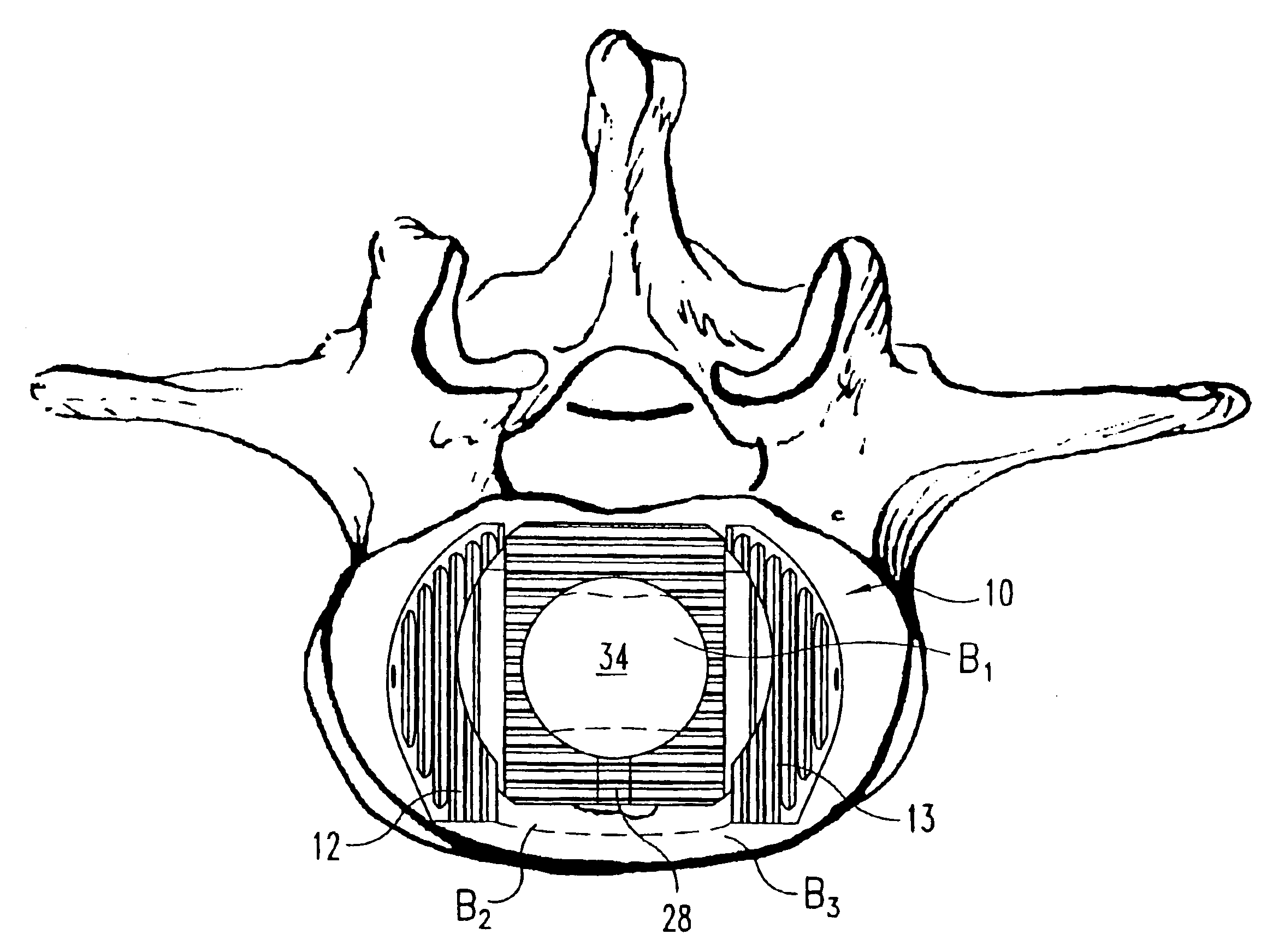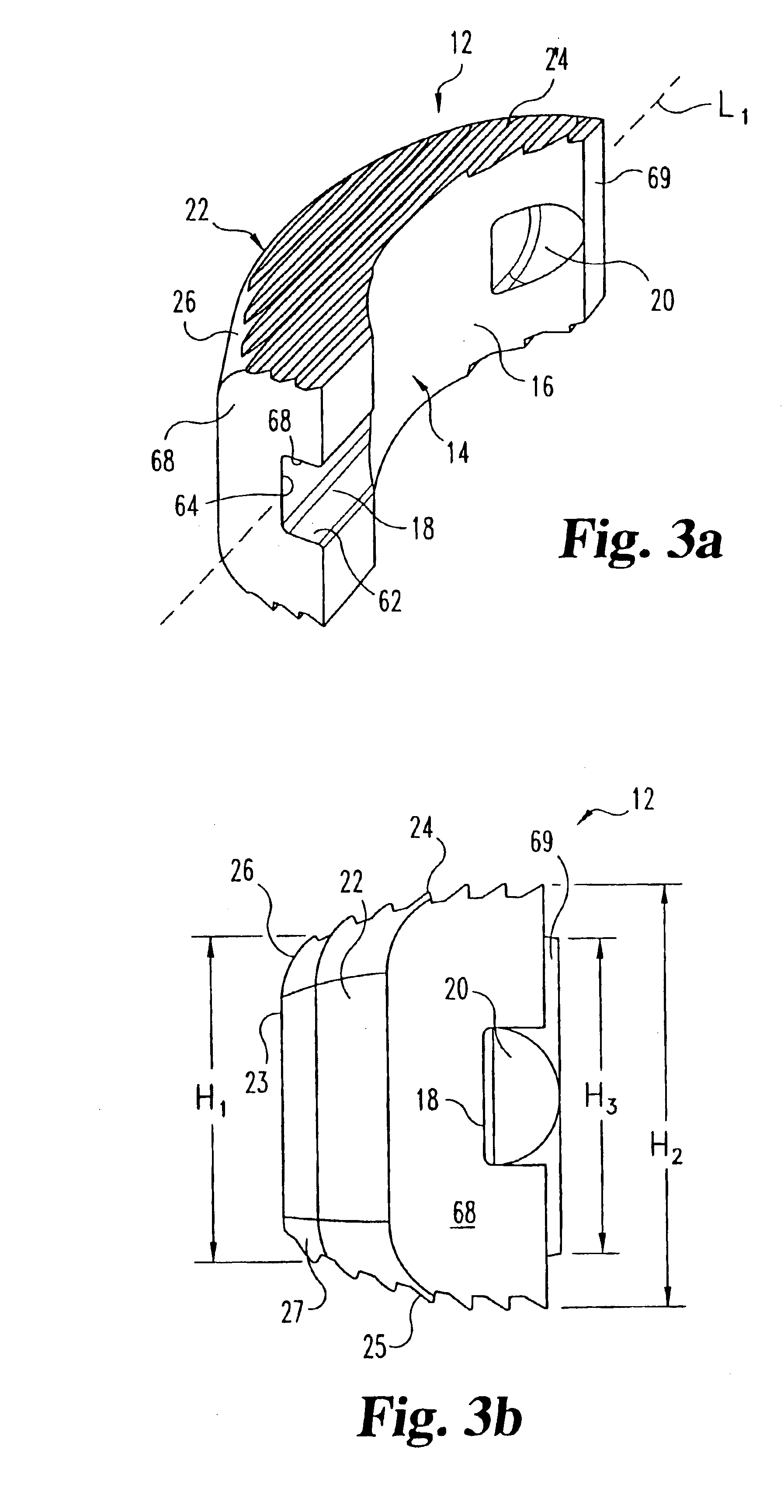Modular interbody fusion implant
a technology of interbody fusion and implants, which is applied in the field of implants for use in interbody fusion, can solve the problems of nerve damage, nerve damage, nerve damage, and even paralysis, and can not provide sufficient biomechanical support to allow a full range of vertebral motion,
- Summary
- Abstract
- Description
- Claims
- Application Information
AI Technical Summary
Benefits of technology
Problems solved by technology
Method used
Image
Examples
first embodiment
[0040]Now referring to FIG. 2, the lateral spacer 12 is coupled at its medial side 14 to the connecting member 28. It is contemplated that the lateral spacer 12 can be coupled to the connecting member 28 by using a number of different coupling mechanisms including adhesives, screws, rail / channel connections, bioresorbable fasteners and other mechanisms used to connect components as known to those skilled in the relevant art. As shown in FIG. 2, the lateral spacer 12 according to the present invention has a channel 18 that couples to rails 30 of the connecting member 28. The channel 18, as shown in FIG. 3a, is formed on the medial side 14 of the lateral spacer 12. In a preferred embodiment, channel 18 extends in substantially parallel alignment to longitudinal axis L1. Channel 18 is defined by lower surface 62, opposing upper surface 66 and intervening side surface 64. The surfaces 62, 64 and 66 are interrupted by concave medial surface 14 and resume adjacent posterior end 69. Prefer...
second embodiment
[0047]the present invention is shown in FIGS. 5-6. As shown in FIG. 5, a lateral spacer 40 has a rail 42 and not a channel. Accordingly, as shown in FIG. 6, a connecting member 44 has a pair of channels 46 instead of a pair of rails. The lateral spacer 40 and the connecting member 44 then can be coupled together by the rails 42 and channels 46.
[0048]A third embodiment of the present invention is shown in FIG. 7. A spinal spacer 48 according to the third embodiment of the present invention includes a pair of the lateral spacers 12, a first connecting member 50, and a second connecting member 52. The first and second connecting members 50, 52 are coupled to the lateral spacers 12 using the same connecting mechanisms as discussed above. Using the two smaller connecting members 50, 52 instead of a single larger connecting member 28 further reduces the required size of the original bone stock, thereby making more donor bone segments suitable for use in a modular bone graft for spinal fus...
PUM
 Login to View More
Login to View More Abstract
Description
Claims
Application Information
 Login to View More
Login to View More - R&D
- Intellectual Property
- Life Sciences
- Materials
- Tech Scout
- Unparalleled Data Quality
- Higher Quality Content
- 60% Fewer Hallucinations
Browse by: Latest US Patents, China's latest patents, Technical Efficacy Thesaurus, Application Domain, Technology Topic, Popular Technical Reports.
© 2025 PatSnap. All rights reserved.Legal|Privacy policy|Modern Slavery Act Transparency Statement|Sitemap|About US| Contact US: help@patsnap.com



